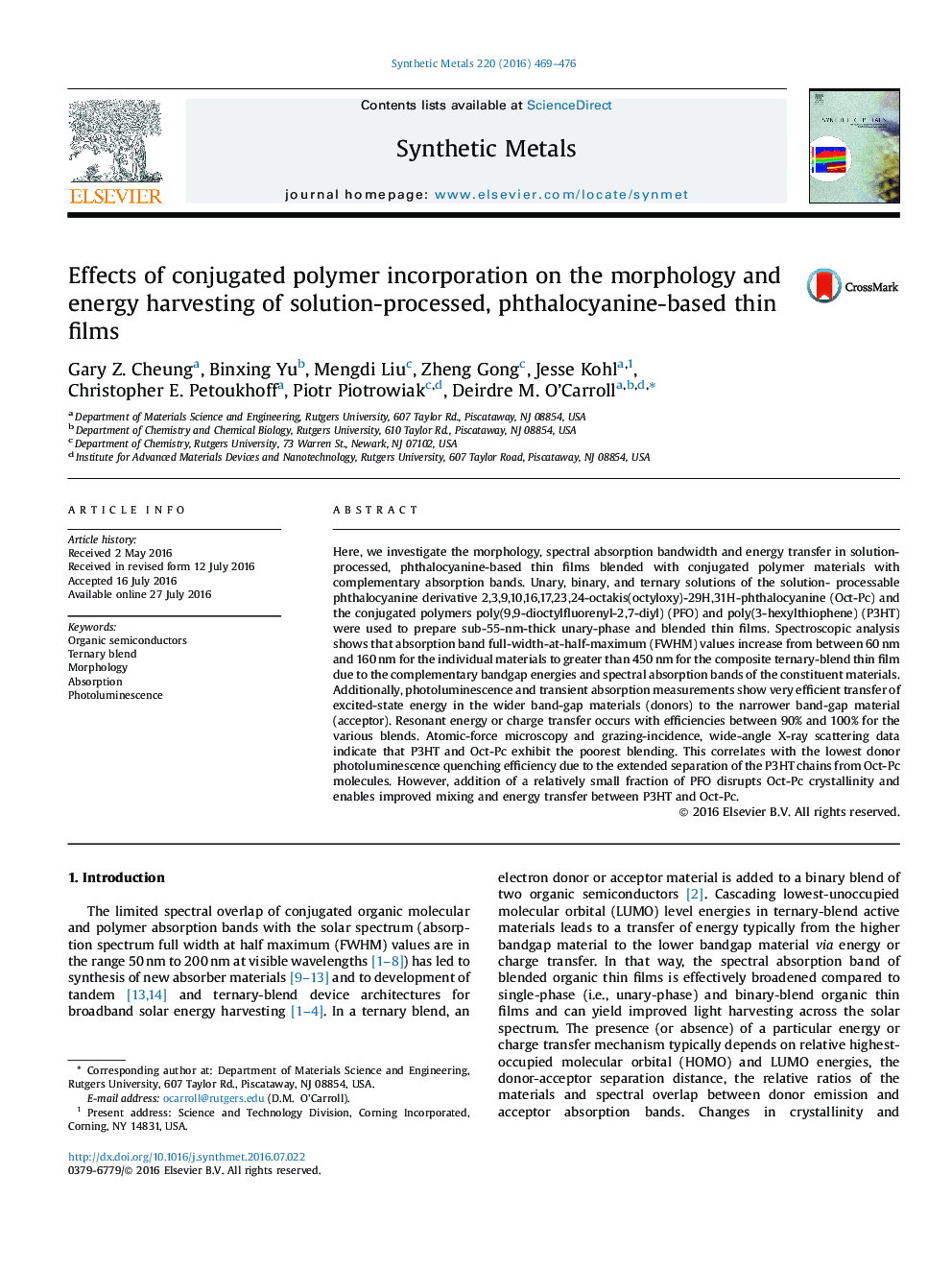| Article ID | Journal | Published Year | Pages | File Type |
|---|---|---|---|---|
| 1440117 | Synthetic Metals | 2016 | 8 Pages |
•Efficient energy transfer occurs between conjugated polymers and a phthalocyanine derivative.•Absorption bandwidth is increased by a factor of more than 2.5 for in the ternary blend.•A small fraction of polyfluorene improves crystallinity and energy transfer.
Here, we investigate the morphology, spectral absorption bandwidth and energy transfer in solution-processed, phthalocyanine-based thin films blended with conjugated polymer materials with complementary absorption bands. Unary, binary, and ternary solutions of the solution- processable phthalocyanine derivative 2,3,9,10,16,17,23,24-octakis(octyloxy)-29H,31H-phthalocyanine (Oct-Pc) and the conjugated polymers poly(9,9-dioctylfluorenyl-2,7-diyl) (PFO) and poly(3-hexylthiophene) (P3HT) were used to prepare sub-55-nm-thick unary-phase and blended thin films. Spectroscopic analysis shows that absorption band full-width-at-half-maximum (FWHM) values increase from between 60 nm and 160 nm for the individual materials to greater than 450 nm for the composite ternary-blend thin film due to the complementary bandgap energies and spectral absorption bands of the constituent materials. Additionally, photoluminescence and transient absorption measurements show very efficient transfer of excited-state energy in the wider band-gap materials (donors) to the narrower band-gap material (acceptor). Resonant energy or charge transfer occurs with efficiencies between 90% and 100% for the various blends. Atomic-force microscopy and grazing-incidence, wide-angle X-ray scattering data indicate that P3HT and Oct-Pc exhibit the poorest blending. This correlates with the lowest donor photoluminescence quenching efficiency due to the extended separation of the P3HT chains from Oct-Pc molecules. However, addition of a relatively small fraction of PFO disrupts Oct-Pc crystallinity and enables improved mixing and energy transfer between P3HT and Oct-Pc.
